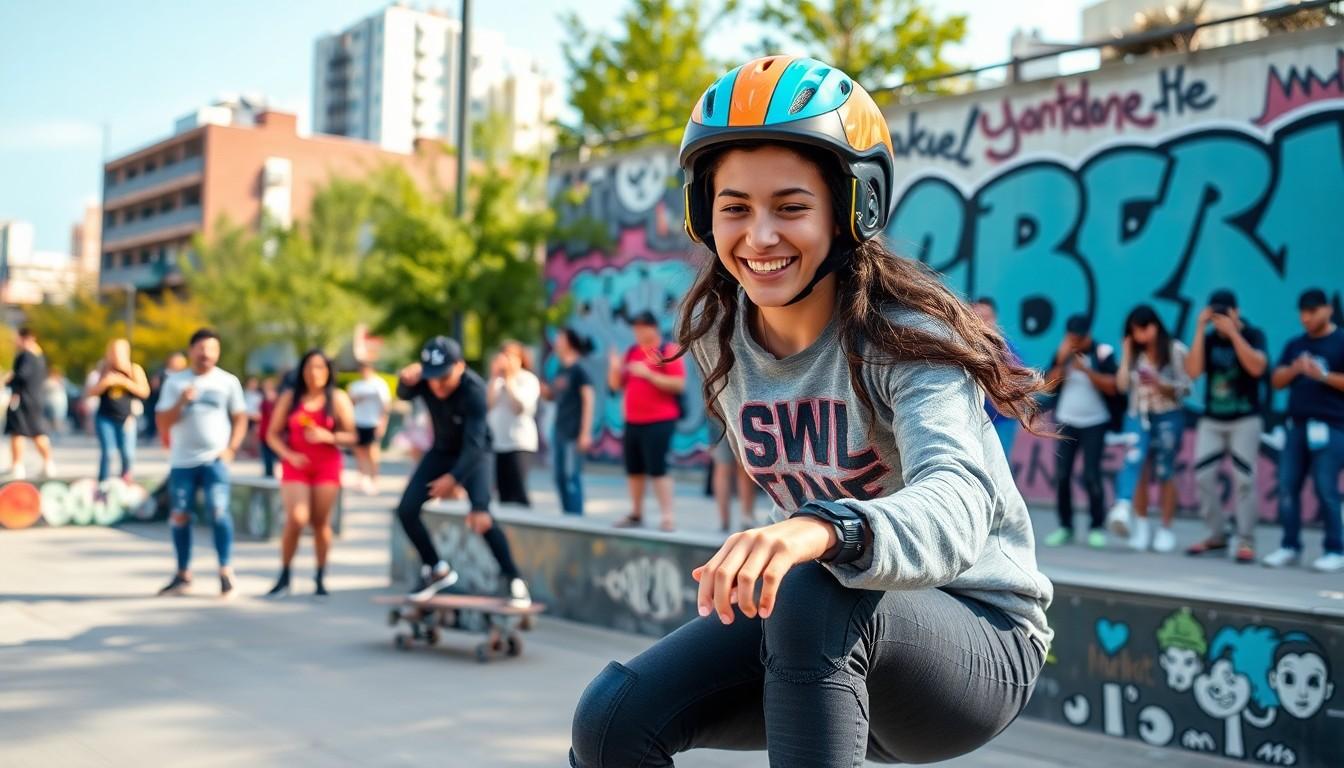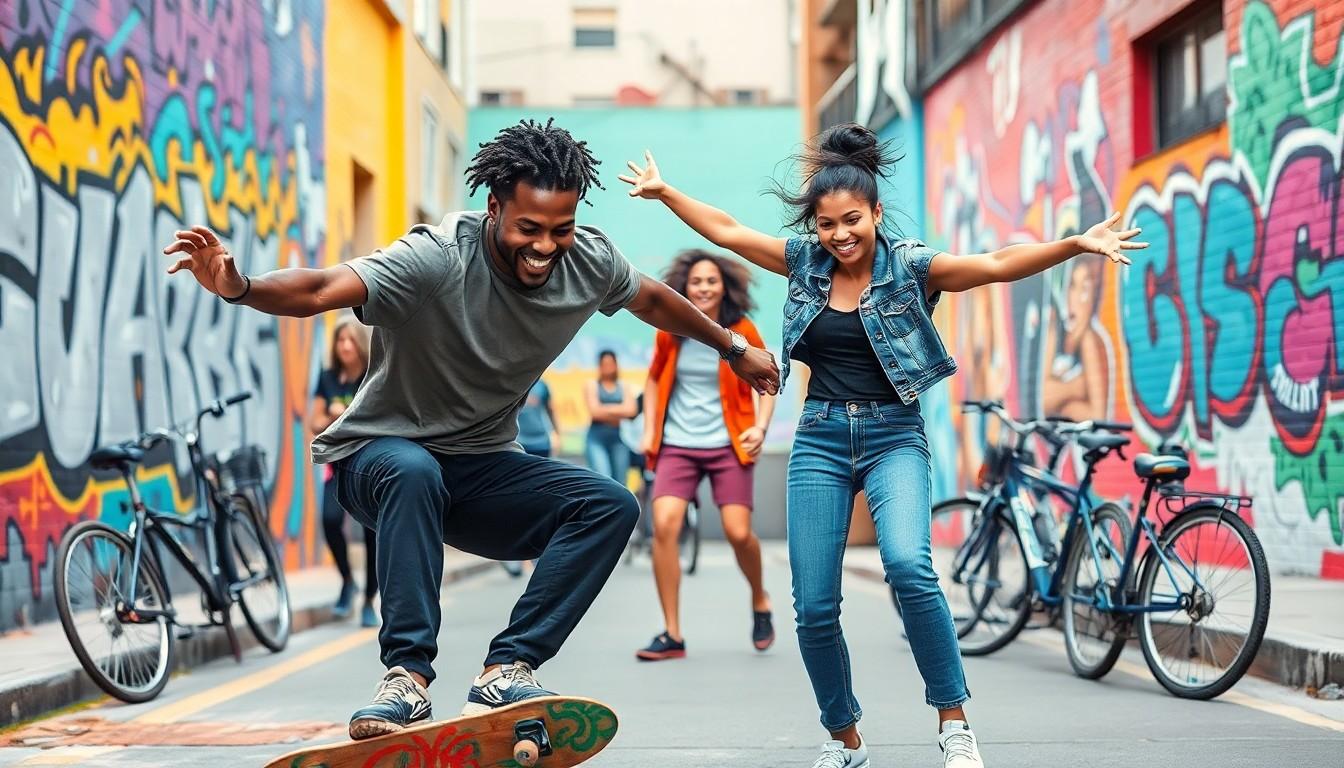Urban sports culture isn’t just a trend; it’s a vibrant movement that’s reshaping the way people connect with their cities. Picture this: skateboards zipping down city streets, parkour enthusiasts scaling walls like they’re in an action movie, and street dancers busting moves that could make even the most seasoned performer green with envy. This culture thrives on creativity, community, and a dash of adrenaline, turning ordinary urban landscapes into playgrounds.
Urban Sports Culture
Urban sports culture embodies the energetic and creative spirit of city life. It merges athleticism with artistic expression, fostering community engagement.
Definition and Scope
Urban sports culture includes various physical activities such as skateboarding, parkour, and street dancing. Each discipline thrives in urban environments, transforming public spaces into dynamic arenas for self-expression. This culture emphasizes creativity, pushing the boundaries of movement and style. Participants often collaborate with others, enhancing their skills while building strong community ties. Inclusivity remains a hallmark of urban sports, drawing people from diverse backgrounds. The culture also extends to art forms, including music and fashion, blending elements of style and identity.
Historical Context
Urban sports culture traces its roots back to the late 20th century, with skateboarding emerging in California during the 1960s and 70s. As urban environments evolved, so did these sports, adapting to the challenges and opportunities presented by the cityscape. In the 1980s and 90s, the rise of hip-hop culture intersected with street sports, shaping a new mode of expression. Parkour developed in France during the late 20th century, showcasing movement’s practical application in urban settings. Today, urban sports continue to gain recognition, with events and competitions celebrating their evolution.
Key Elements of Urban Sports Culture

Urban sports culture thrives on creativity and inclusivity, characterized by various key elements that define its essence.
Diversity of Sports
Skateboarding, parkour, and street dancing epitomize the variety within urban sports. This culture embraces multiple disciplines, empowering individuals to explore unique modes of expression. Participants range from casual enthusiasts to skilled athletes, each playing a vital role in community dynamics. Fitness events often include mixed activities, showcasing the versatility of urban sports. Each sport cultivates its distinct identity while contributing to the collective energy of urban environments.
Community Engagement
Community engagement forms the backbone of urban sports culture. Local events unite participants, fostering connections and a sense of belonging. Collaboration becomes essential, as athletes and artists work together to create vibrant experiences. Public spaces transform into shared arenas where people enjoy activities and celebrate achievements. Organizations frequently host competitions and workshops, encouraging skill development and inclusivity. Through these initiatives, urban sports not only enhance athleticism but also strengthen community ties across diverse backgrounds.
Popular Urban Sports
Urban sports encompass various activities that thrive in city settings, contributing to the vibrant culture. Key sports include skateboarding, parkour, and street basketball.
Skateboarding
Skateboarding originated in California during the late 20th century and quickly gained popularity. Skaters often use public spaces like streets, parks, and plazas for their tricks and jumps. The sport emphasizes creativity, allowing individuals to express themselves through unique styles and techniques. Competitions and events showcase talents and foster community, encouraging skaters to connect and share their passion. Organizations frequently host workshops to teach new skills, making skateboarding accessible for all ages. Today, skateboarding continues to evolve, merging athleticism with artistic expression.
Parkour
Parkour, also known as free-running, involves navigating urban landscapes through dynamic movements. Athletes use techniques like jumping, climbing, and vaulting to overcome obstacles. Community plays a significant role in parkour, as practitioners often train together, offering support and encouragement. The sport emphasizes self-improvement and creativity, with participants encouraged to develop their unique movement styles. Events and demonstrations help raise awareness of parkour, inspiring newcomers to join the movement. Its roots trace back to military obstacle training, but it has transformed into a popular urban sport connecting individuals from diverse backgrounds.
Street Basketball
Street basketball thrives in urban environments, fueled by community spirit and competition. Players often gather at local courts to showcase their skills and compete in pick-up games. Different styles and strategies emerge, reflecting the creativity of players. Street basketball tournaments attract spectators and participants from various neighborhoods, fostering camaraderie and rivalries. Local leagues and events promote participation, making the sport accessible to players of all levels. Streetball culture influences fashion, music, and dance, reinforcing its significance within urban sports culture. The game’s informal nature encourages social interaction, turning courts into community hubs.
The Role of Technology in Urban Sports Culture
Technology significantly shapes urban sports culture, enhancing how participants engage and connect. This influence is evident in social media and wearable technology, which each play pivotal roles.
Social Media Influence
Social media amplifies the visibility of urban sports culture. Platforms like Instagram and TikTok allow athletes to share their skills and creativity with global audiences. These platforms facilitate communities, encouraging collaboration among participants. Viral trends often spark interest in specific activities, drawing new enthusiasts into the culture. Events and challenges spread quickly, uniting local and international practitioners. Participants often showcase their lifestyles, creating inspiration for others. This digital landscape fosters connections while promoting inclusivity and diversity within urban sports.
Wearable Technology
Wearable technology enhances performance and safety in urban sports. Devices like smartwatches and fitness trackers provide real-time data on various metrics. Athletes use these tools to monitor heart rates and track movements, aiding in skill improvement. Some innovations enable participants to assess their performance levels accurately. Safety gear integrated with sensors can alert users to potential hazards, ensuring risks are minimized. This technology empowers individuals to push their limits while focusing on their well-being, seamlessly integrating into the urban sports experience.
Challenges Facing Urban Sports Culture
Urban sports culture faces significant challenges that can hamper its growth and accessibility. Limited urban spaces directly hinder participants’ ability to practice and enjoy their sports.
Urban Space Limitations
Public spaces often serve multiple purposes, leading to competition for space among various community activities. As cities continue to develop, available areas for sports like skateboarding, parkour, and street basketball diminish. This limitation restricts individuals from accessing essential venues to hone their skills. Furthermore, urban environments may lack the necessary infrastructure to support diverse activities. Adequate facilities, such as skate parks or designated parkour areas, remain sparse in many cities. Efforts to reclaim and repurpose underutilized spaces for urban sports can foster inclusivity and encourage community engagement.
Safety and Regulation Issues
Safety concerns significantly impact urban sports culture. Participants frequently face dangers from traffic, uneven surfaces, and inadequate safety measures. Local regulations surrounding the use of public spaces can also impose restrictions on certain activities. Such regulations often discourage creativity and independence. Balancing individual expression with community safety remains essential. Organizations and community leaders occasionally advocate for policy changes that promote a safer environment for athletes. Through increased dialogue with local governments, urban sports culture can address these barriers and propose initiatives that encourage safer practices while allowing for artistic expression.
Urban sports culture stands as a testament to creativity and community in the heart of cities. It transforms ordinary spaces into vibrant arenas where individuals express themselves through various athletic and artistic pursuits. This culture thrives on diversity and inclusivity, drawing participants from all walks of life.
As urban sports continue to evolve, they face challenges that require attention and advocacy. Addressing issues like limited space and safety concerns is vital for fostering an environment where creativity can flourish. By promoting dialogue between athletes and local governments, urban sports culture can secure a brighter future, ensuring that these dynamic activities remain accessible and impactful for generations to come.

